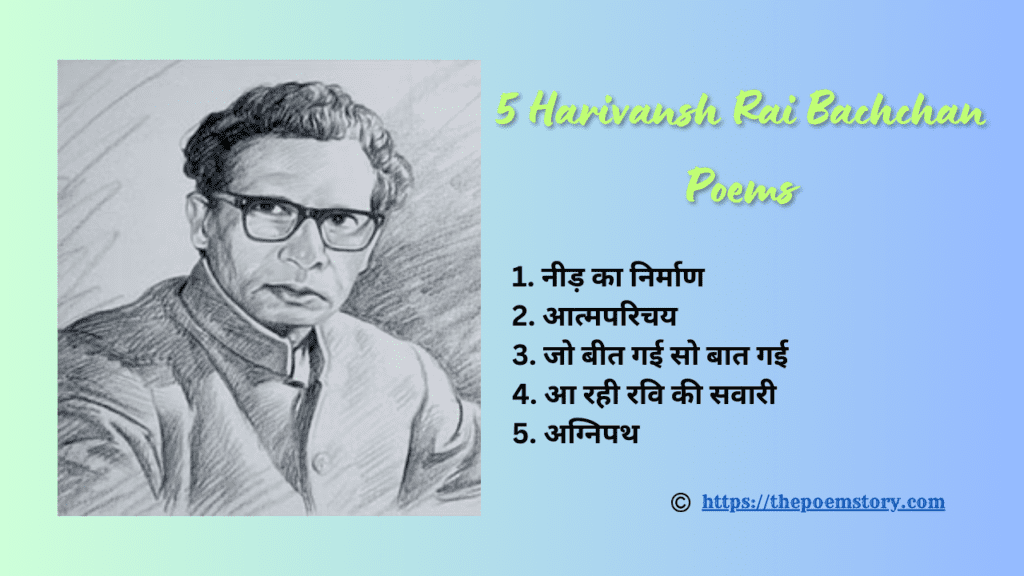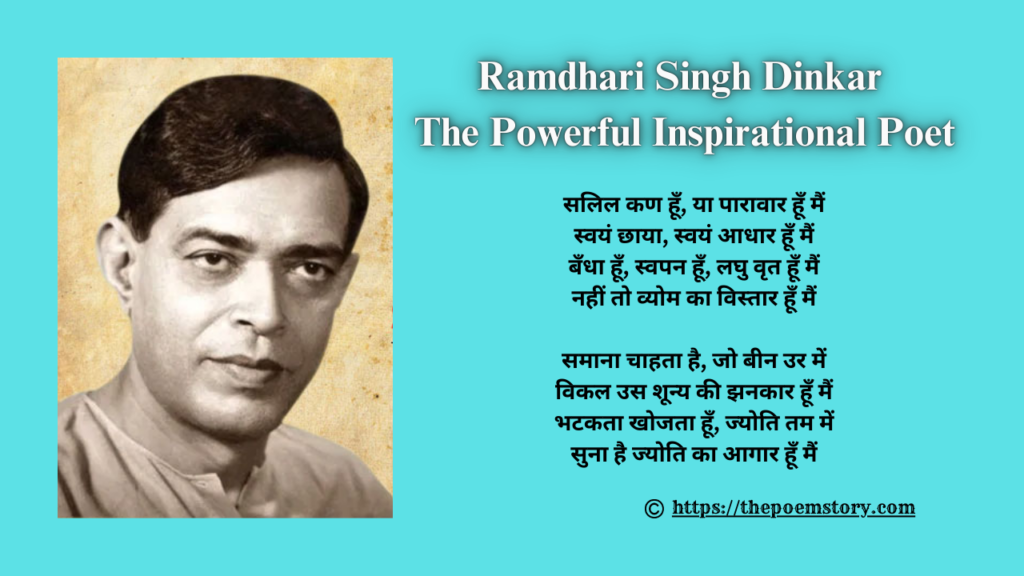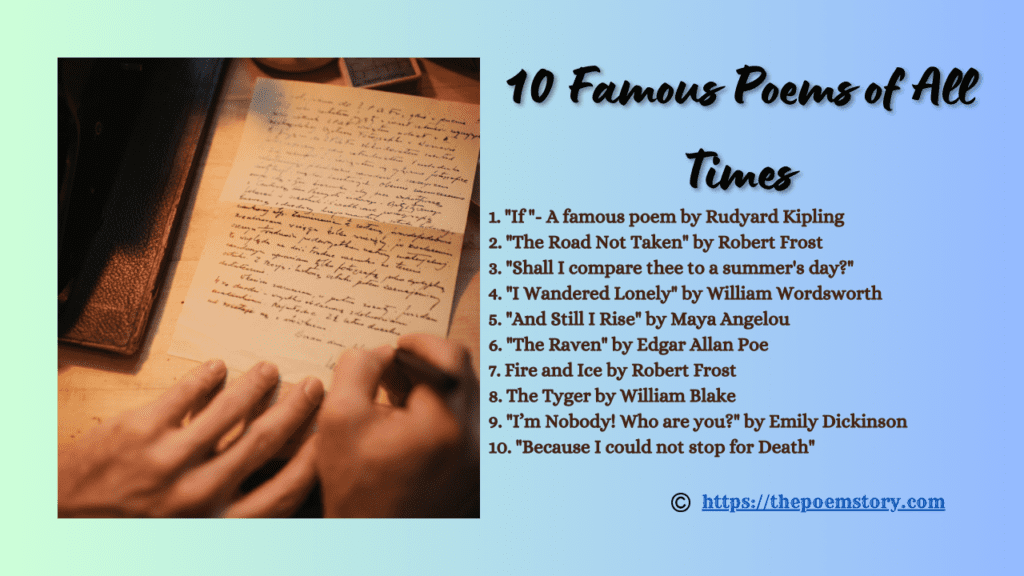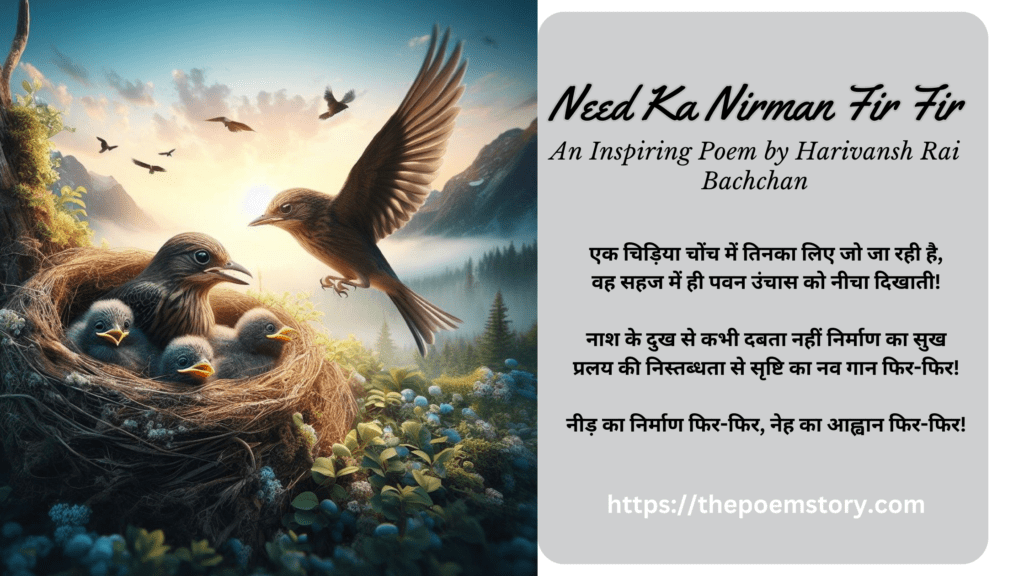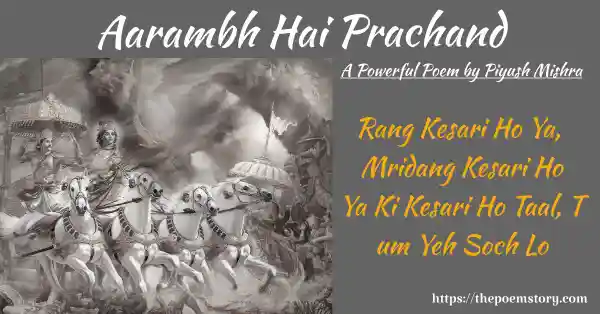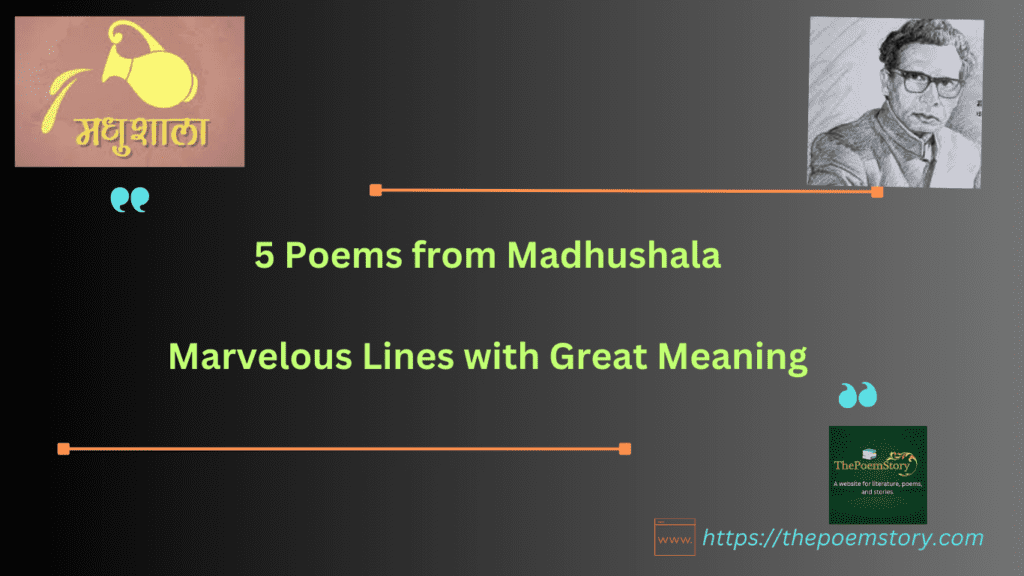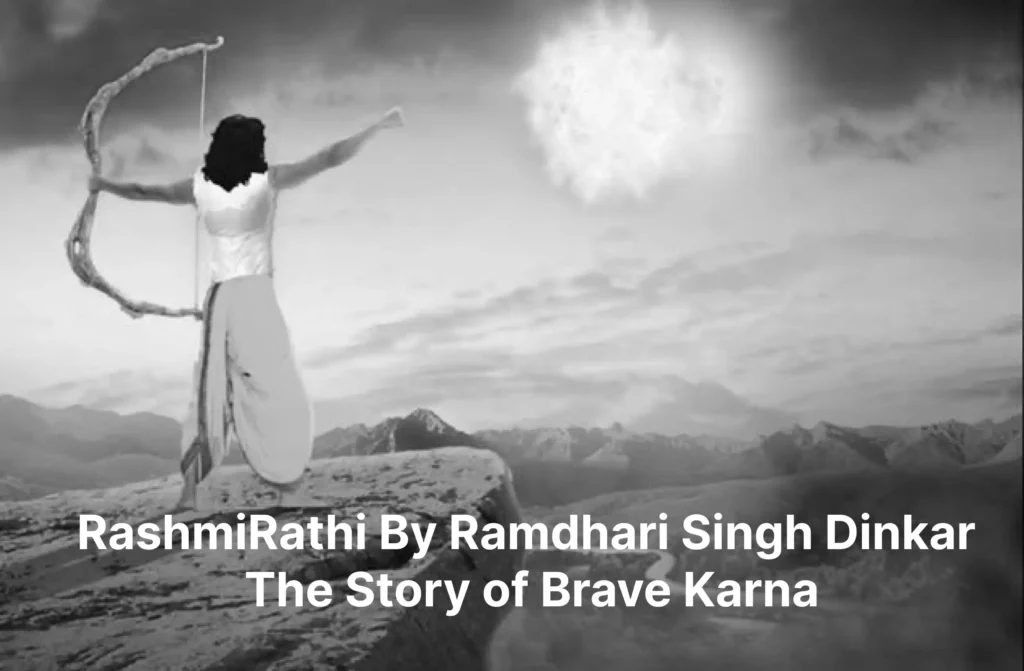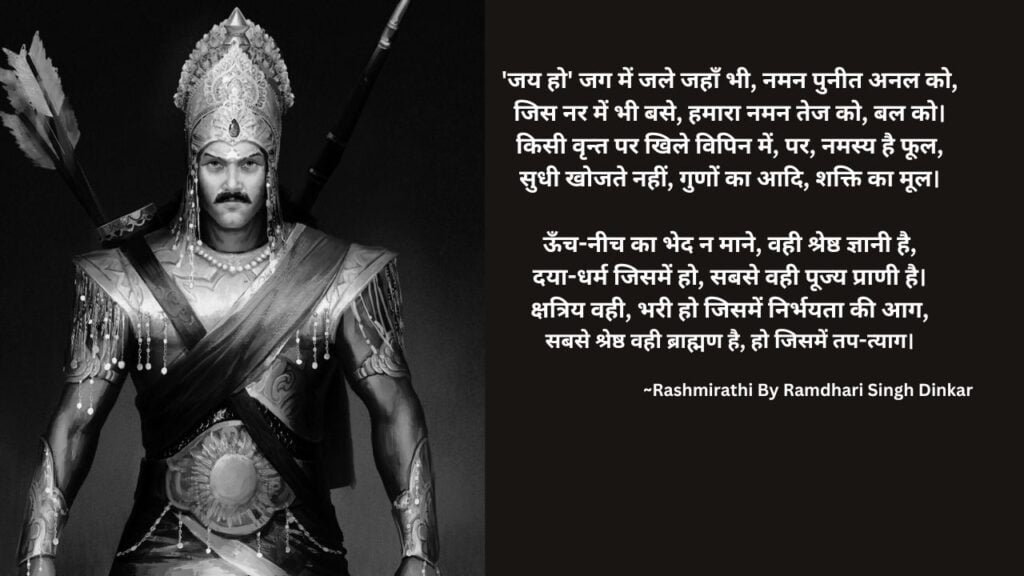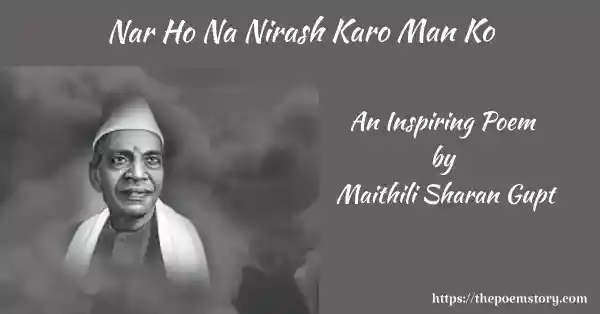Introduction – Because I Could Not Stop for Death
“Because I Could Not Stop for Death” is a famous poem written by Emily Dickinson, one of the most renowned American poets. This poem is often interpreted as an allegory of the journey of life towards death. The speaker personifies death as a gentlemanly carriage driver who escorts her through various stages of life towards eternity. It explores themes of mortality, the passage of time, and the acceptance of death as a natural part of life.
The poem portrays Death as a courteous and patient figure who kindly stops for the speaker, suggesting that death is not to be feared but accepted as a natural part of existence. This personification of Death as a gentlemanly suitor adds a layer of comfort and familiarity to the concept of mortality.
The same concept I went through while writing the post on Mahamritunjaya Mantra.
[Read: The Real Meaning of Mahamrityunjaya Mantra]
Because I Could Not Stop for Death | because i could not stop for death poem | i could not stop for death poem | because i could not stop death by emily dickinson | emily dickinson poem i could not stop for death
Table of Contents
Because I Could Not Stop for Death Poem Lyrics
Poem by Emily Dickinson
Because I could not stop for Death –
~ EMILY DICKINSON
He kindly stopped for me –
The Carriage held but just Ourselves –
And Immortality.
We slowly drove – He knew no haste
And I had put away
My labor and my leisure too,
For His Civility –
We passed the School, where Children strove
At Recess – in the Ring –
We passed the Fields of Gazing Grain –
We passed the Setting Sun –
Or rather – He passed Us –
The Dews drew quivering and Chill –
For only Gossamer, my Gown –
My Tippet – only Tulle –
We paused before a House that seemed
A Swelling of the Ground –
The Roof was scarcely visible –
The Cornice – in the Ground –
Since then – ’tis Centuries – and yet
Feels shorter than the Day
I first surmised the Horses’ Heads
Were toward Eternity –
Because I Could Not Stop for Death | because i could not stop for death poem | i could not stop for death poem | because i could not stop death by emily dickinson | emily dickinson poem i could not stop for death
Explanation of the Poem
Meaning of Poem Because I Could Not Stop Death by Emily Dickinson
Because I could not stop for Death –
~ EMILY DICKINSON
He kindly stopped for me –
The Carriage held but just Ourselves –
And Immortality.
“Because I could not stop for Death –”: This line suggests that the speaker did not have control over her encounter with Death; it happened unexpectedly or beyond her influence. Death is personified as an inevitable force, something that cannot be avoided.
“He kindly stopped for me –”: Despite the inevitability of Death, the speaker perceives Death as courteous and considerate. The use of “kindly” suggests a gentle and compassionate demeanor, perhaps comforting the speaker as they embark on this journey.
“The Carriage held but just Ourselves –”: This line describes the setting of the encounter between the speaker and Death. The carriage symbolizes the vehicle that transports them on their journey. The phrase “but just Ourselves” indicates that only the speaker and Death are present, emphasizing the personal and intimate nature of the experience.
“And Immortality”: This phrase introduces the idea of immortality, suggesting that Death’s carriage not only carries the speaker to her final destination but also to a realm beyond earthly life. Immortality here may symbolize the eternal afterlife or the soul’s transcendence beyond death.
Overall, these lines establish the poem’s exploration of mortality, the inevitability of death, and the acceptance or reconciliation with the idea of mortality as an integral part of the human experience.
We slowly drove – He knew no haste
~ EMILY DICKINSON
And I had put away
My labor and my leisure too,
For His Civility –
“We slowly drove – He knew no haste”: This line describes the pace of the carriage ride with Death. Unlike a hurried or frantic journey, the movement is slow and deliberate. Death is depicted as patient and unhurried, indicating a peaceful transition rather than a sudden or violent end. This lack of haste could also symbolize the timeless nature of death, suggesting that it transcends the rush of earthly life.
“And I had put away / My labor and my leisure too, / For His Civility –”: In these lines, the speaker reflects on her attitude towards life’s activities and responsibilities. “My labor and my leisure” represent the activities and pursuits of earthly life, encompassing both work and leisure time. By stating that she had “put away” these aspects, the speaker implies that she has set aside or relinquished her earthly concerns and distractions. The phrase “For His Civility” suggests that the speaker has willingly chosen to prioritize her encounter with Death over worldly matters, perhaps viewing Death’s visit as an opportunity for a greater understanding or spiritual transition.
Overall, these lines convey a sense of resignation and readiness for the end, as the speaker calmly accepts Death’s arrival and prepares to leave behind the distractions and obligations of earthly life.
We passed the School, where Children strove
~ EMILY DICKINSON
At Recess – in the Ring –
We passed the Fields of Gazing Grain –
We passed the Setting Sun –
“We passed the School, where Children strove / At Recess – in the Ring –”: This line depicts a schoolyard where children are playing during recess, likely engaged in games such as tag or ring-around-the-rosy. The schoolyard symbolizes the innocence and carefree nature of childhood. The “Ring” could refer to a game the children are playing or metaphorically represent the circle of life, emphasizing the cyclic nature of human existence.
“We passed the Fields of Gazing Grain –”: Here, the speaker and Death pass by fields of grain, where the wheat or other crops stand tall and ripe for harvest. The phrase “Gazing Grain” suggests the motion of the grain as it sways in the wind, giving it a sense of life and awareness. These fields symbolize the vitality and abundance of the natural world, as well as the cycles of growth and harvest.
“We passed the Setting Sun –”: As the journey continues, the speaker and Death observe the sun setting on the horizon. This image signifies the end of the day and the approach of twilight. The setting sun can also symbolize the end of life or the passage of time toward the inevitable darkness of death.
These lines collectively paint a picture of life’s journey from childhood innocence through the productive years of adulthood, and finally to the end of life represented by the setting sun. They highlight the passage of time and the universal experiences of growth, productivity, and eventual decline.
Or rather – He passed Us –
~ EMILY DICKINSON
The Dews drew quivering and Chill –
For only Gossamer, my Gown –
My Tippet – only Tulle –
“Or rather – He passed Us –”: This line suggests a reversal of the typical perspective. Instead of the speaker and Death passing by scenes or landmarks, it’s described as if Death passes by them. This inversion of the expected order could imply Death’s omnipresence and ultimate control over the journey.
“The Dews drew quivering and Chill –”: This line describes the environmental conditions during the journey. The “Dews” refer to dewdrops, which are moist and cold. The description of them “quivering” suggests a sense of trembling or shivering, emphasizing the chilliness of the atmosphere. This imagery adds to the atmosphere of quiet and eerie solemnity.
“For only Gossamer, my Gown –”: Here, the speaker describes her attire during the journey. “Gossamer” refers to a delicate and sheer fabric, typically associated with lightness and fragility. The mention of her gown being made of gossamer suggests that it is insubstantial and ethereal, fitting for a journey beyond earthly life.
“My Tippet – only Tulle –”: A tippet is a scarf-like garment worn around the neck, often for warmth or decoration. The speaker’s tippet being described as “only Tulle” indicates that it is made of a similarly delicate and lightweight material. Tulle is a fine netting fabric, reinforcing the image of the speaker’s attire as ethereal and insubstantial.
Overall, these lines contribute to the atmospheric and otherworldly quality of the poem, evoking a sense of mystery and the supernatural. They also emphasize the theme of transition from earthly life to an afterlife or eternity, as symbolized by the speaker’s attire and the eerie atmosphere surrounding the journey with Death.
We paused before a House that seemed
~ EMILY DICKINSON
A Swelling of the Ground –
The Roof was scarcely visible –
The Cornice – in the Ground –
“We paused before a House that seemed / A Swelling of the Ground –”: In this line, the speaker and Death come to a halt in front of what appears to be a house but described as “A Swelling of the Ground.” This image suggests that they have arrived at the speaker’s final resting place, her grave. The description of the grave as a swelling in the ground symbolizes the physical manifestation of death and burial.
“The Roof was scarcely visible –”: The speaker notes that the roof of the house, representing the topmost structure, is hardly discernible. This imagery reinforces the idea that the physical elements of the house are merging with the earth, emphasizing the decay and impermanence of earthly structures.
“The Cornice – in the Ground –”: The cornice is the decorative molding or projection at the top of a building’s exterior wall. Here, the speaker observes that the cornice is embedded or buried in the ground. This further underscores the idea of the house merging with the earth, emphasizing the inexorable connection between life and death, and the eventual return of all things to the earth.
Overall, these lines mark a crucial moment in the speaker’s journey as she confronts the reality of her own mortality and arrives at her final resting place. The imagery of the house dissolving into the ground serves as a powerful symbol of the cycle of life and death, highlighting the transient nature of human existence and the ultimate equality of all in death.
Since then – ’tis Centuries – and yet
~ EMILY DICKINSON
Feels shorter than the Day
I first surmised the Horses’ Heads
Were toward Eternity –
“Since then – ’tis Centuries – and yet / Feels shorter than the Day”: The speaker reflects on the passage of time since her encounter with Death. Despite centuries passing, the duration feels shorter to the speaker than a single day. This paradoxical perception of time emphasizes the relative nature of time in the face of eternity. It suggests that the experience of eternity transcends conventional measures of time, making even long spans of time seem fleeting in comparison.
“I first surmised the Horses’ Heads / Were toward Eternity –”: Here, the speaker recalls a moment from the past when she first realized the direction in which the horses’ heads were pointed during her carriage ride with Death. This metaphorical imagery suggests that the journey with Death was leading towards eternity, towards an afterlife or a timeless state beyond earthly existence. The realization of this destination marks a significant moment of insight or understanding for the speaker.
Overall, these lines encapsulate the speaker’s contemplation of time, eternity, and the transformative nature of her encounter with Death. They convey a sense of awe and wonder at the vastness of eternity and the profound impact it has had on the speaker’s perception of time and existence.
Because I Could Not Stop for Death | because i could not stop for death poem | i could not stop for death poem | because i could not stop death by emily dickinson | emily dickinson poem i could not stop for death
Summary of the Poem “Because I Could Not Stop for Death”
emily dickinson poem i could not stop for death
The poem is a lyrical exploration of the theme of death and the journey from life to the afterlife. It is narrated by a deceased person, reflecting on the events that occurred during her journey with Death.
The speaker begins by describing how Death kindly stopped for her because she could not stop for Death herself. Death is personified as a gentle escort who arrives to take the speaker on a carriage ride. The speaker describes the carriage as holding only themselves and Immortality, suggesting that the journey with Death transcends earthly existence and leads to eternity.
As they embark on their journey, the pace is slow and unhurried. The speaker reflects on how she has put aside both her labor and leisure, emphasizing her acceptance of Death’s arrival and her readiness to leave behind the distractions of earthly life.
During the journey, the speaker and Death pass by various scenes that symbolize different stages of life. They pass by a school where children are playing, fields of grain, and the setting sun. These scenes represent the innocence of childhood, the productivity of adulthood, and the inevitable decline of old age, respectively.
As they continue their journey, the speaker observes the setting sun, symbolizing the approach of the end of life. Eventually, they come to a halt in front of what appears to be a house but is described as a swelling in the ground. This imagery suggests that they have arrived at the speaker’s final resting place, her grave.
The speaker reflects on the passage of time since her encounter with Death, noting that centuries have passed but feel shorter than a day. She recalls the moment when she first realized that the horses’ heads were pointing towards eternity, signifying the direction of their journey towards the afterlife.
Overall, the poem explores themes of mortality, the passage of time, and the acceptance of death as a natural part of life’s journey. Through vivid imagery and personification, Dickinson offers a poignant meditation on the human experience of mortality and the transition to the afterlife.
Read More:
| A | B | C | D | E |
| F | G | H | I | J |
| K | L | M | N | O |
| P | Q | R | S | T |
| U | V | W | X | Y |
| Z |
